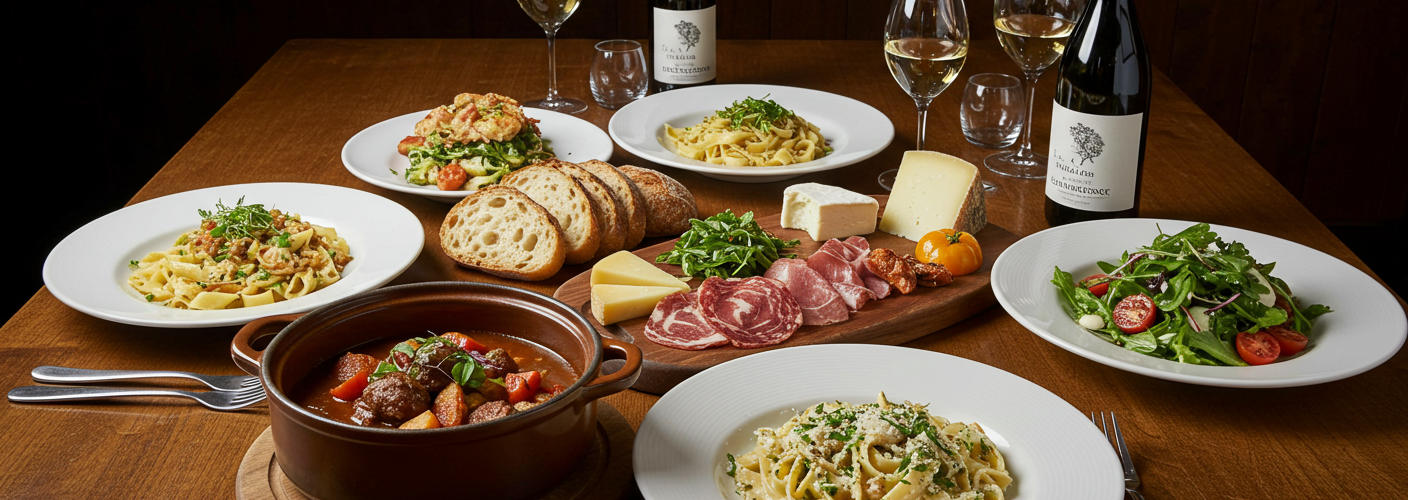European cuisine encompasses a vast array of flavors, traditions, and ingredients that reflect the continent’s diverse cultures and histories. Each country contributes unique dishes, preparing food that tells a story of heritage, geography, and climate. From the hearty stews of Eastern Europe to the delicate pastries of France, European food invites us on a culinary journey.
A Culinary Journey Through Europe
Mediterranean Delights
Starting in Southern Europe, the Mediterranean region is well-known for its emphasis on fresh produce, olive oil, and seafood. Countries like Italy and Greece showcase vibrant flavors in dishes such as risottos, pastas, and moussaka. The use of herbs like basil, oregano, and rosemary is prevalent, crafting a fragrant atmosphere that epitomizes summer dining. Italian cuisine, in particular, boasts regional variations; the rich, cheesy dishes of the North contrast with the light, tomato-based meals found in the South.
The Heartiness of Central Europe
Moving north and central into countries like Germany, Austria, and Hungary, food becomes substantially heartier. Here, you’ll find dishes laden with meats, potatoes, and hearty grains. Germany rewards its travelers with sausages, schnitzels, and sauerkraut, while Hungarian cuisine delights with its rich goulash, often flavored with the unique spice paprika. Central European desserts such as strudel provide a sweet counterpart to the savory main courses, often showcasing seasonal fruits encased in delicate pastry.
The Rich Flavors of the British Isles
Traveling to the British Isles, we encounter a cuisine characterized by its simplicity yet hearty flavors. Traditional dishes such as fish and chips, shepherd’s pie, and full English breakfasts emphasize comfort and nostalgia. Ingredients like lamb, beef, potatoes, and garden vegetables dominate the menu, reflecting a farm-to-table ethos. Scotland brings iconic dishes like haggis and influences from whisky, while Ireland’s bread, particularly soda bread, has captured hearts around the globe.
Eastern European Comforts
East European countries such as Poland, Ukraine, and Russia are known for their comfort foods that are deeply rooted in traditions. Dishes like pierogi, borscht, and blintz showcase the rich agricultural history of these nations. Root vegetables, cabbage, and grains play significant roles, often elevated by pickling and fermentation, practices that are a hallmark of this region.
The Sweet Side of Europe: Desserts and Baked Goods
No exploration of European cuisine would be complete without a nod to desserts. From the delicate macarons of France and the creamy tiramisu of Italy to the robust port wine cakes of Portugal, sweets vary greatly from country to country. Bakeries in France are renowned for their pastries, while Scandinavia excels in cakes flavored with berries and cardamom. Each sweet treat embodies the local culture and historical influences, providing a perfect ending to any meal.
Conclusion
European food is a reflection of its history, climate, and the availability of ingredients. The continent’s culinary landscape is as varied as its geography, with every dish and ingredient telling a story. As globalization progresses, many of these traditional foods find their way into kitchens around the world, allowing us to experience the rich tapestries of European cuisine at home. Whether it’s through an authentic Italian meal or a comforting bowl of borscht, diving into European food is not just about eating—it’s about savoring the myriad cultures that make this continent a culinary haven.




Add comment